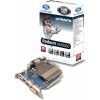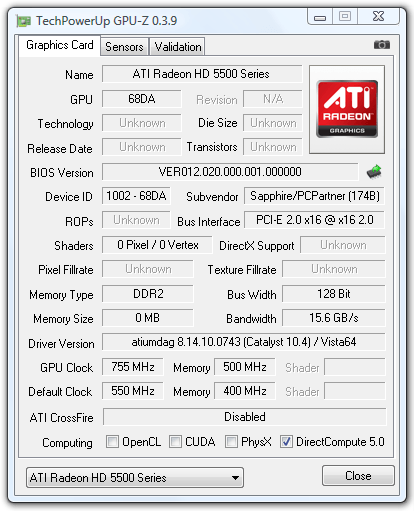- Qualcomm Launches Snapdragon 4 Gen 2 Mobile Platform
- AMD Launches Ryzen PRO 7000 Series Mobile & Desktop Platform
- Intel Launches Sleek Single-Slot Arc Pro A60 Workstation Graphics Card
- NVIDIA Announces Latest Ada Lovelace Additions: GeForce RTX 4060 Ti & RTX 4060
- Maxon Redshift With AMD Radeon GPU Rendering Support Now Available
Sapphire Radeon HD 5550 Ultimate

This past February, AMD quietly launched the Radeon HD 5550 alongside the much more touted HD 5570. At about $10 less than that card, the HD 5550 is an unusual breed. To help put all of the pieces together, Sapphire sent us its “Ultimate” edition of the card, which uses reference clock speeds, but features a very effective passive cooler.
Page 10 – Overclocking Sapphire’s Radeon HD 5550 Ultimate
Before tackling our overclocking results, let’s first clear up what we consider to be a real overclock and how we go about achieving it. If you read our processor reviews, you might already be aware that we don’t care too much for an unstable overclock. It might look good on paper, but if it’s not stable, then it won’t be used. Very few people purchase a new GPU for the sole purpose of finding the maximum overclock, which is why we focus on finding what’s stable and usable.
To find the max stable overclock on an AMD card, we use the company’s GPU Overclocking Tool, as it’s open-ended and doesn’t have true clock limits, unlike the Overdrive tool found in the ATI Catalyst Control Center. For NVIDIA, we use EVGA’s Precision, which like the previous tool, also doesn’t hold you back from achieving the most impressive clocks possible.
Once we find what we believe might be a stable overclock, the card is put through 30 minutes of torture with the help of OCCT 3.0’s GPU stress-test, which we find to push any graphics card harder than any other stress-tester we’ve ever used. If the card passes there, we then further verify by running the card through a 2x run of 3DMark Vantage’s Extreme setting. Finally, games are quickly loaded and tested out to assure we haven’t introduced any side-effects.
If all these tests pass without issue, we consider the overclock to be stable.
Overclocking Sapphire’s Radeon HD 5550 Ultimate
Where budget components are concerned, overclocking can be made quite interesting, or quite boring. In this particular case, it was the former, as the card had a lot more room for overclocking than I had imagined, especially with the use of a passive cooler. Once again, the reference clock speeds for the HD 5550 are 550MHz Core, and 400MHz Memory. When all said and done, the max stable overclock to be reached was 755MHz Core and 500MHz Memory.
Yes… we’re talking a 37% clock boost to the Core, and a 25% boost to the Memory. ATI’s Catalyst Control Center topped out at 700MHz Core, so we had to use AMD’s GPU Overclocking Tool in order to exceed that. Interestingly, 500MHz Memory on the dot was where we had to stop, Even boosting up to 510MHz gave us errors after a while. Memory is certainly a finicky thing.
You can see the results of our stress test by clicking on the image above.
With such a major boost, surely we’ll see some real performance gains, right?


Yes, that’s definitely true. In some cases, the performance differences are huge. Of course, the performance as a whole is far from desirable, but if you do pick up one of these cards, you’ll have a fair amount of breathing room from an overclocking standpoint, and given the low overall performance, any sort of boost is going to be hugely appreciated.
Support our efforts! With ad revenue at an all-time low for written websites, we're relying more than ever on reader support to help us continue putting so much effort into this type of content. You can support us by becoming a Patron, or by using our Amazon shopping affiliate links listed through our articles. Thanks for your support!






